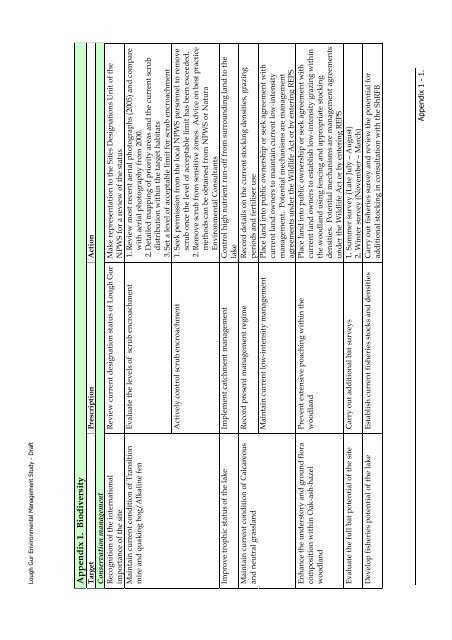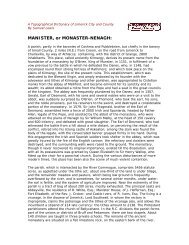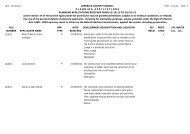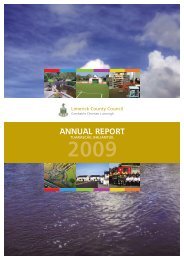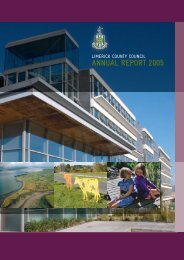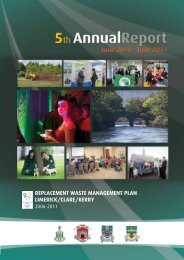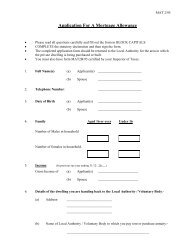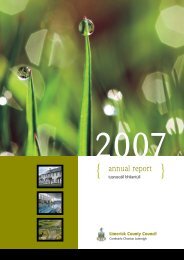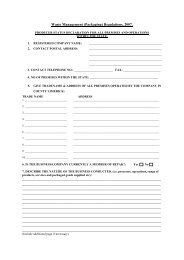Lough Gur Environmental Management Study February 2009
Lough Gur Environmental Management Study February 2009
Lough Gur Environmental Management Study February 2009
You also want an ePaper? Increase the reach of your titles
YUMPU automatically turns print PDFs into web optimized ePapers that Google loves.
<strong>Lough</strong> <strong>Gur</strong> <strong>Environmental</strong> <strong>Management</strong> <strong>Study</strong> - Draft<br />
Appendix 1. Biodiversity<br />
Target Prescription Action<br />
Conservation management<br />
Recognition of the international<br />
Review current designation status of <strong>Lough</strong> <strong>Gur</strong> Make representation to the Sites Designations Unit of the<br />
importance of the site<br />
NPWS for a review of the status<br />
Maintain current condition of Transition Evaluate the levels of scrub encroachment 1. Review most recent aerial photographs (2005) and compare<br />
mire and quaking bog/Alkaline fen<br />
with aerial photography from 2000.<br />
2. Detailed mapping of priority areas and the current scrub<br />
distribution within the target habitats<br />
3. Set a level of acceptable limit for scrub encroachment<br />
Actively control scrub encroachment 1. Seek permission from the local NPWS personnel to remove<br />
scrub once the level of acceptable limit has been exceeded.<br />
2. Remove scrub from sensitive zones. Advice on best practice<br />
methods can be obtained from NPWS or Natura<br />
<strong>Environmental</strong> Consultants<br />
Improve trophic status of the lake Implement catchment management Control high nutrient run-off from surrounding land to the<br />
lake<br />
Maintain current condition of Calcareous Record present management regime Record details on the current stocking densities, grazing<br />
and neutral grassland<br />
periods and fertiliser use<br />
Maintain current low-intensity management Place land into public ownership or seek agreement with<br />
current land owners to maintain current low-intensity<br />
management. Potential mechanisms are management<br />
agreements under the Wildlife Act or by entering REPS<br />
Enhance the understory and ground flora Prevent extensive poaching within the<br />
Place land into public ownership or seek agreement with<br />
composition within Oak-ash-hazel woodland<br />
current land owners to establish low-intensity grazing within<br />
woodland<br />
the woodland using fencing and appropriate stocking<br />
densities. Potential mechanisms are management agreements<br />
under the Wildlife Act or by entering REPS<br />
Evaluate the full bat potential of the site Carry out additional bat surveys 1. Summer survey (Late July – August)<br />
2. Winter survey (November – March)<br />
Develop fisheries potential of the lake Establish current fisheries stocks and densities Carry out fisheries survey and review the potential for<br />
additional stocking in consultation with the ShRFB<br />
Appendix 1 - 1.


